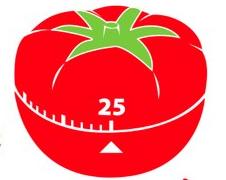- Home
- 7 Steps of Goal Setting
- Time Management Systems
6 Popular Time Management Systems
If your time management systems consist of energy drinks or several cups of coffee per day, then it is time for a change. A good system captures all your actions, gives you a greater sense of control, and enables you to actively manage your workflow and your life.
As a time management coach I have seen a number of different time
management systems, some better than others. Whatever system you choose,
it needs to evolve to suit your needs and preferences.
Here I talk about the best systems on the market, who it would suit, and their strengths and weaknesses.
Getting Things Done (GTD)
This very well known time management system came from the book Getting Things Done - The Art of Stress-Free Productivity, (David Allen, 2001).
In a nutshell this system is about getting things out of your head and into one place, and then religiously reviewing your system.
GTD is great for people who are overwhelmed the daily tide of tasks that they need to do. I love the way that GTD separates information from action and then gives you a framework for dealing with these actions.
GTD is tool agnostic, not requiring a special set of add-ins or planners. It is equally versatile across paper or electronic, although it does make sense to have GTD software that is linked to your email system (especially if many of your actions come through email).
Franklin Covey Time Management System
The Franklin Covey time management system was inspired by the work of Benjamin Franklin and popularised by Stephen Covey in habit #3 of The Seven Habits of Effective People.
In a nutshell the Franklin Covey system is about being very clear on your goals and then ensuring that you spend much of your time on these priorities.
The Franklin Covey System is great for people who are inspired by a personal mission and disciplined enough to review it daily and weekly as a means to validate their priorities and tasks. It is also a good system if you have the team or organizational support to adopt their approach.

This system is highly regarded and is great for people who are inspired by setting personal missions and have the discipline to check weekly and daily on their priorities.
The system is not tool agnostic. While you can run the system on your own calendar, notebook, and lists, I personally found this quite hard. When I used the Franklin Covey planners and software the system was much easier and I found I got more out of it.
However, this system would be difficult for people to adopt for those people who are already overwhelmed with tasks and can't find the time to develop their own personal mission.
The Now Habit
The book The Now Habit is a strategy to overcome procrastination.
Inspired by the work of Neil Flore, who struggled with procrastination as a grad student and psychologist, the Now Habit is built around a concept called ‘Unschedule’. The concept is that you take your weekly calendar and fill it in with all of your pre-commitments. Meetings, appointments, gym visits, leisure activities, commuting, classes, free time, sleep, socializing.
With the Unschedule fill in with work on projects only after you have spent at least 30 minutes of quality (unitterrupted) time on it. This technique emphasizes what you have done and also rewards yourself with a more enjoyable task. By starting small (30 minutes) this Now Habit gets you to think small first which is a great strategy to overcome procrastination.
The Now Habit requires nothing more than your calendar in 30 minute increments and provides a means to overcome procrastination. However, it does not go into any detail about prioritization, distinguishing between tasks or projects, or tracking your time usage.
The Pomodoro technique
Developed in 1992, the Pomodoro Technique harnesses your focus in quick short spirts of activity – and is easily used with the previous Now Habit strategy. Using a kitchen timer the Pomodoro Technique can be learned very quickly.
When using the Pomodoro Technique I had a list of the things that I needed/wanted to do that day and then with the kitchen timer I tackled each item for 25 minutes - breaking my day up into 25 minute intervals (also called Pomodoros). When the Pomodoro was over I marked the item with an X and took a 3-5 minute break.

At a psychological level this quick burst of activity followed by a short rest maximizes your concentration levels and focuses your attention. The idea is that nothing should interrupt your Pomodoro - which in turn maximizes your concentration for that period.
For a free desktop timer that tracks your Pomodoro.
Eat that Frog
Mark Twain once said “eat a live frog first thing in the morning and nothing worse will happen to you the rest of the day.” In time management speak, do your hardest (most important) thing first and the rest of the day will be a gain.
I have coached people adopt this approach in which they schedule 2 hours in the morning to do their most important task (usually the one that they had previously procrastinated on). They have commented that they have felt better throughout the day, and much more productive, because they have got the most significant thing done before 11am.
They key here is to choose your frog. While Brian Tracey provides a number of ways to choose that Frog in Eat That Frog the night before, the only thing I would add is that you build this idea into your weekly planner.
The 4 hour work week
Tim Ferris the author of The 4 Hour Work Week wrote an engaging book that at its core was about outsourcing and delegating anything that is not related to your core competencies.
While Tim Ferris goes to the nth degree in terms of outsourcing and delegating, the key idea her is that you free up your time to do the most important things to you, your family, or your business.
If you liked this article on time management systems then you will like this article on how to choose a personal organizer for better time management.
Rant or Rave about a Time Management System
Do you have a great story about this? Share it!
What Other Visitors Have Said
Click below to see contributions from other visitors to this page...
To do list for a time management system Not rated yet
To do list for a time management system is pretty obvious but we never pay attention and do as required.
I feel the checklist is a must and have it …
Pomodoro time management system increased my time management skills Not rated yet
The Pomodoro time management system increased my focus and efficiency.
By breaking my projects into tasks I was able to set more achievable and smaller …
Can time management help me to meet deadlines at work and get a good night rest? Not rated yet
I am finding that my life is simply full of work. I work all day and by the time I get home I have about 6 hours sleep before I get up and go for work …
Online calendars Not rated yet
I have heard that you can get online calendars that can share information across a group.
Do you know any? Free if possible?
Thanks KP
Kell's …
New! Comments
Have your say about what you just read! Leave me a comment in the box below.